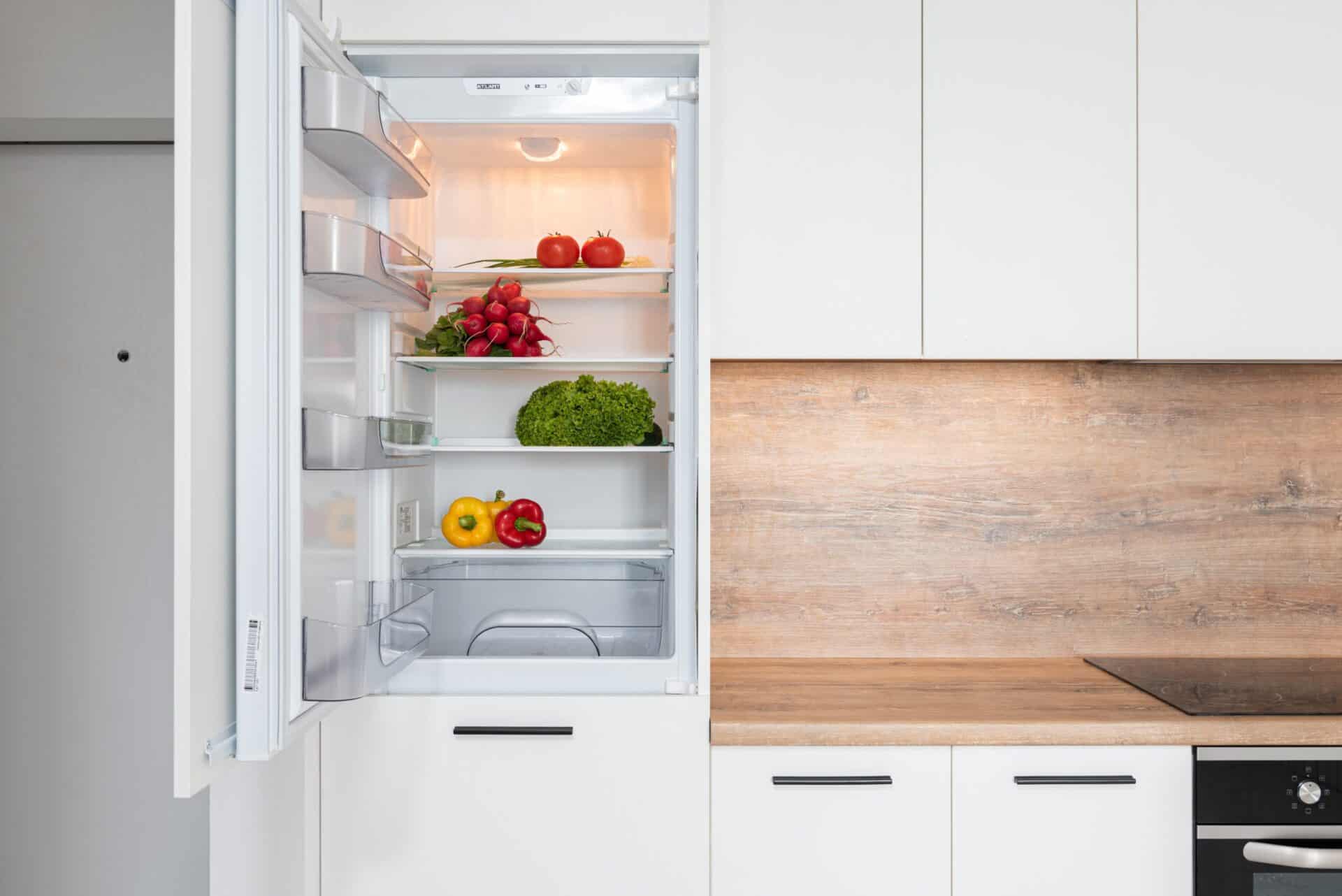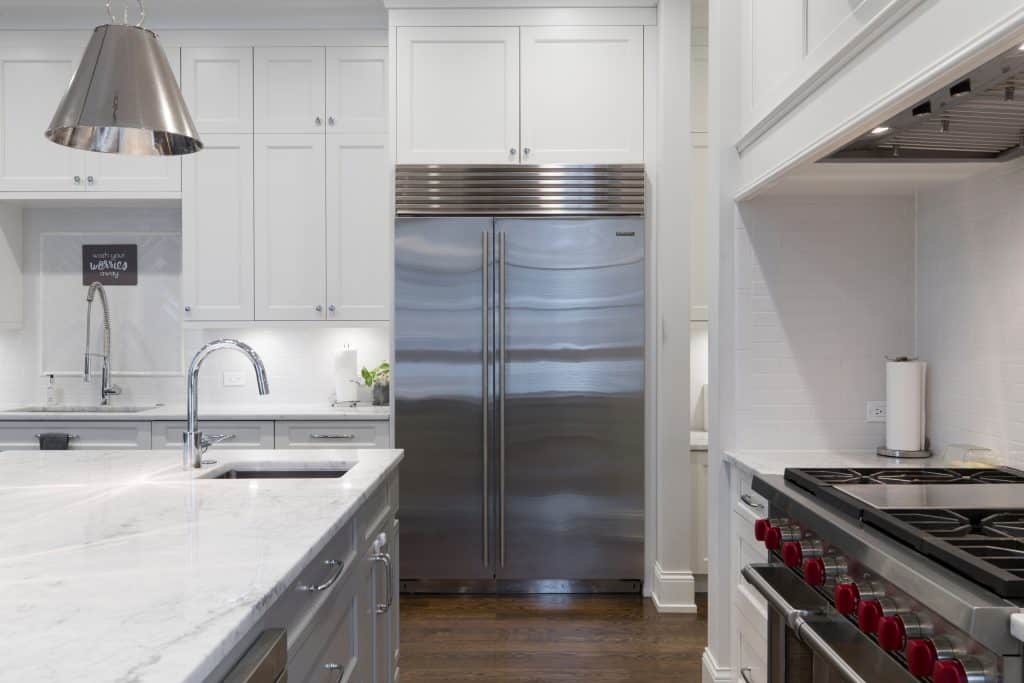Refrigerator as a Gun Safe: Will It Work?

Looking for a secure way to store your guns in the home? You may think that using a refrigerator as a gun safe is an unnatural idea, but stick with us here!
Some people think storing guns in a refrigerator is as safe as using a traditional gun safe, even though it may seem unusual. Read on to find out if a refrigerator is a safe place to keep your precious firearms.
Refrigerators As Gun Safes

Storing guns in a refrigerator may seem practical and cost-efficient, but it is not recommended.
Refrigerators are not designed for storing firearms and may not provide the proper conditions for safe storage. The moisture and temperature inside a refrigerator can damage the gun and make it unsafe to use.
Additionally, refrigerators can easily be opened by someone who should not have access to a gun, like children and home visitors, making them an unsafe storage option.
It is recommended to use a proper gun safe or lockbox that is specifically designed for storing firearms to ensure the safety and security of the guns.
Consequences of Converting Refrigerators Into Gun Safes
If you really have no choice but to convert your refrigerator into a gun safe, it is imperative to take note of the consequences of doing so.
Putting guns in a fridge may seem like a good idea because it stops bad people from getting them, but it can be dangerous.
First, storing a firearm in a refrigerator will expose it to moisture which can cause rust and corrode the internal parts, making it unsafe to use.
Second, keeping guns in a fridge can cause the metal to expand and contract or damage the materials.
Lastly, keeping guns in a fridge can cause some parts to freeze or stop working. Choose to store firearms in a designed gun safe, which is far safer than other options.
It’s always recommended to use a proper gun safe or lockbox that is specifically designed for storing firearms to ensure the safety and security of the guns.
These types of safes are designed to be durable, secure, and able to withstand potential break-ins, as well as provide proper ventilation and temperature control for your firearms.
Choosing the Right Gun Safe
When selecting a gun safe, it is important to look at all the details:
1. Size
When it comes to buying a gun safe, size does matter. As you get more guns, you will need to upgrade to a bigger gun safe to accommodate them all.
2. Cooling Capability
When buying a gun safe, check if it can keep things cool. Ensure protection against fire and water by looking for safes with these features.
3. Lockability
When choosing a locking mechanism, pick one that offers security and ease of use. Choose locks that open in an emergency and are hard for bad people to open.
Tips and Best Practices for Storing Firearms
Here are some tips and best practices for storing your firearms:
1. Use a proper gun safe or lockbox
A gun safe or lockbox is the best way to store firearms. These are specifically designed to be durable, secure, and able to withstand potential break-ins.
2. Keep the safe in a secure location
The safe should be kept in a location that is not easily accessible to children or unauthorized individuals. This could be a closet, a basement, or a locked room.
3. Use a lock
Always use a lock on the safe or lockbox, even when it is in a secure location. This will provide an additional layer of security.
4. Store firearms unloaded
Make sure that all firearms are unloaded before storing them in the safe or lockbox. This will help to prevent accidents.
5. Keep ammunition separate
Store ammunition in a separate location from firearms. This will help to prevent accidents and keep the firearms in good condition.
6. Regularly check and maintain firearms
Regularly check and maintain firearms to ensure they are in good working condition. This includes cleaning, oiling, and checking for rust or corrosion.
7. Keep firearms away from moisture
Moisture can cause damage to firearms and make them unsafe to use. Keep firearms in a dry location and use a dehumidifier if necessary.
8. Keep firearms out of reach of children
Always keep firearms out of reach of children, including in the safe or lockbox. Make sure that the safe or lockbox is in a location that is not accessible to children.
By following these best practices, you can ensure the safe and secure storage of your firearms.
Conclusion
In conclusion, using a refrigerator as a gun safe is not recommended. Refrigerators are not designed for storing firearms and may not provide the proper conditions for safe storage.
It is important to store firearms in a proper gun safe or lockbox that is specifically designed for storing firearms.
FAQs
Is it safe to store firearms in a refrigerator?
It is not advisable to keep firearms in a refrigerator. Storing guns in a fridge can harm them because of the temperature and humidity changes.
How do I prepare my refrigerator for use as a gun safe?
Converting your refrigerator into a gun safe is not advisable. But if you have no other option, prepare your refrigerator by using a dehumidifying product to protect your guns from rust.
How often should I check on my firearms stored in a refrigerator gun safe?
Checking on your firearms stored in a refrigerator gun safe should be done at least once a month. You’ll want to make sure that the safe is functioning and contains the right guns.
Are there any legal considerations for using a refrigerator as a gun safe?
Make sure to check the laws before storing your guns in a refrigerator. It might be illegal in certain states.
Sources:
“Personal Firearm Storage in the United States.” Personal Firearm Storage in the United States | RAND, 11 July 2022, www.rand.org/research/gun-policy/analysis/essays/personal-firearm-storage.html.
“Federal Firearms Licensee Quick Reference and Best Practices Guide | Bureau of Alcohol, Tobacco, Firearms and Explosives.” Federal Firearms Licensee Quick Reference and Best Practices Guide | Bureau of Alcohol, Tobacco, Firearms and Explosives, 23 Sept. 2022, www.atf.gov/firearms/federal-firearms-licensee-quick-reference-and-best-practices-guide.
